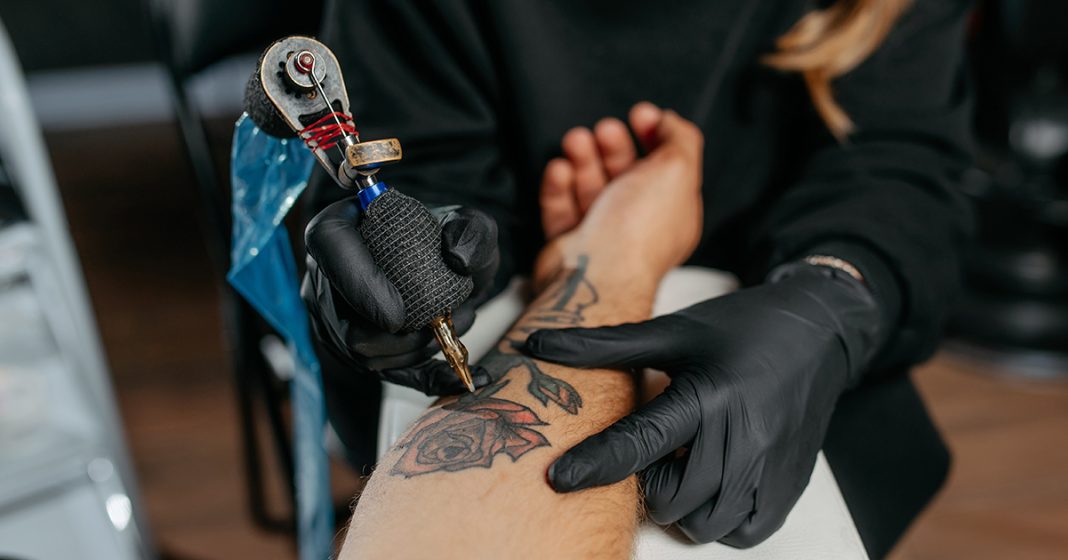The Impact of Tattoos and Piercings on Job Opportunities: A Case Study
In recent discussions about employment and body art, a compelling story surfaced online involving a woman named Ash Putnam. She took to social media to share her experiences regarding her job application at TJ Maxx, where she felt her visible tattoos and facial piercings significantly influenced the hiring decision. Rather than receiving the expected support from the online community, she encountered a surprising amount of skepticism about her situation, with many suggesting that such body modifications could hinder her employability. This incident sheds light on a broader cultural debate regarding body art and acceptance in the workplace.
Ash Putnam’s Experience with TJ Maxx
Ash Putnam, a 24-year-old woman known on TikTok as ashxobrien, recently applied for a retail position at TJ Maxx. Following the submission of her application, she faced disappointment upon receiving a generic rejection email instead of a personalized response. In a video that garnered over 7 million views, Ash expressed her discontent, stating, “I applied to TJ Maxx a few weeks ago, and they denied my application without even a phone call.” This reaction is common among job seekers who invest time and effort into applications, only to receive impersonal responses.
Seeking clarity about her rejection, Putnam decided to confront the hiring manager directly. During their candid conversation, she learned that the official reason for her rejection was her lack of experience compared to other candidates. However, Ash couldn’t shake the feeling that her tattoos might have played a substantial role in the decision-making process. “I asked her if it was because of my tattoos. Obviously, a lot of places don’t like tattoos,” she recounted, adding that the manager denied this was a factor. “I don’t feel like that’s true, but whatever. I’ll leave it at that,” she concluded, reflecting the frustration many feel when their appearance is perceived as a detriment.
Concerns About Youth Employment
In her video, Putnam articulated a broader concern about the job market for young people, especially those who may have limited work experience. “I’m just wondering how teenagers and young adults who haven’t had a job before are supposed to get employed,” she questioned. “How are they supposed to get a job if these places are only hiring people based on experience?” This query reflects a significant challenge facing many recent graduates and young job seekers today. It highlights a troubling paradox: while employers seek experienced candidates, many young adults have difficulty obtaining their first opportunities to gain that experience, often leading to frustration and disengagement from the job search process.
The Reactions from the Online Community
The TikTok community’s response to Ash’s video was mixed, with some users offering their thoughts on her situation. One commenter humorously remarked, “Maybe it’s the demon spider??” referencing a striking tattoo on her neck. Others suggested that while tattoos may not be universally frowned upon, the placement—especially on the face—could be perceived as a drawback in the hiring process. “There’s a reason that tattoo artists refer to face tattoos as career enders,” noted one user, emphasizing the prevailing attitude toward visible body art in professional environments. This discourse illustrates the divide between personal expression and societal expectations, and how this divide influences young job seekers in their pursuit of employment.
Professional Opinions on Body Art and Employment
Amidst the varied reactions, several professionals chimed in with their experiences from the hiring perspective. A former HR supervisor commented, “There is no way any company would put you in front of customers like TJ Maxx,” hinting at the retail chain’s likely hesitation to associate with candidates who have highly visible tattoos and piercings. Furthermore, a former hiring manager at TJ Maxx corroborated these sentiments, stating, “I used to be a hiring manager for TJ Maxx, and I will tell you it’s the facial piercings and tattoos.” These insights underscore a significant reality in the job market: personal appearance, including tattoos and piercings, can heavily influence hiring decisions, particularly in customer-facing roles where first impressions are crucial.
The Evolving Perception of Tattoos in the Workplace
Despite the pushback against body art in some professional circles, it’s important to recognize that the acceptance of tattoos in the workplace has evolved over the past decade. Many companies are beginning to understand that tattoos do not necessarily equate to a lack of professionalism or work ethic. Companies like Microsoft and Starbucks have adopted more inclusive policies regarding visible tattoos, acknowledging that diverse forms of self-expression can coexist with a strong work ethic. Ash Putnam herself has argued that businesses need to rethink their hiring processes, stating, “If they think tattoos determine job skill and qualifications, they really need to rethink. Tattoos, piercings, and colored hair are not unprofessional. It shows creativity and uniqueness… people need to get over not liking tattoos.” This perspective advocates for a more progressive approach to hiring that appreciates individuality.
The Broader Implications for Job Seekers
Putnam’s situation is not an isolated incident; it reflects a broader societal challenge faced by many individuals with visible tattoos and piercings as they navigate the job market. The tension between personal expression and professional expectations raises critical questions about inclusivity and diversity in hiring practices. As more individuals express themselves through body art, employers will need to balance their brand image with the changing cultural landscape. Companies must evaluate whether their hiring criteria reflect outdated norms or if they are genuinely rooted in concerns about professionalism.
In conclusion, Ash Putnam’s experience highlights the ongoing debate about body art and its implications for employment opportunities. This case study serves as a microcosm of a larger issue: as society continues to evolve, it begs the question: should tattoos and piercings be a determining factor in hiring decisions? The conversation is far from over, and it is crucial for all stakeholders—employers, employees, and job seekers—to consider the impact of personal expression in the workplace, fostering an environment where diversity and individuality can thrive.

















